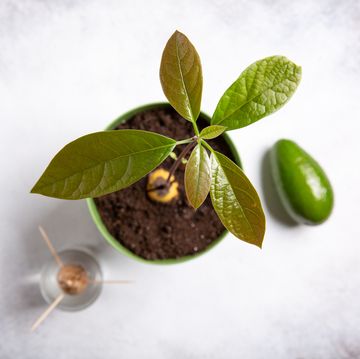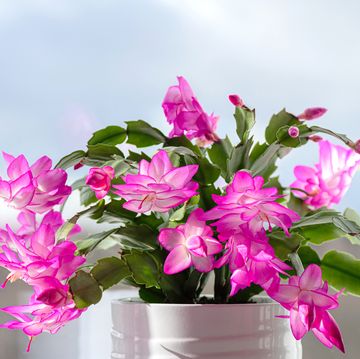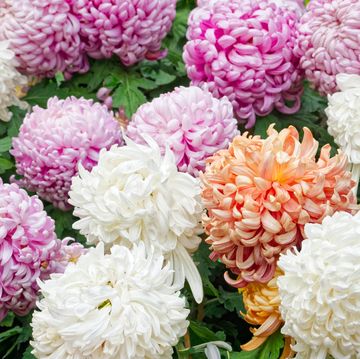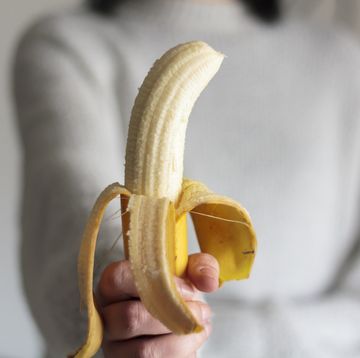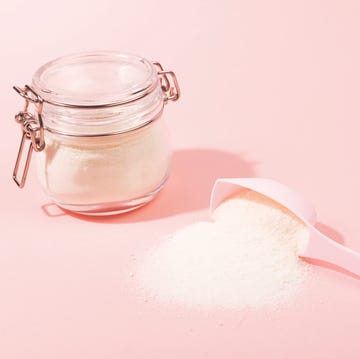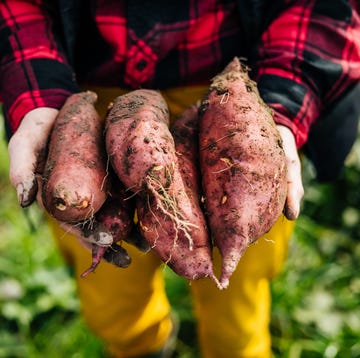1Death Camas
 Murphy_Shewchuk//Getty Images
Murphy_Shewchuk//Getty ImagesThis pretty perennial is found throughout the western U.S., but don't let its beauty fool you — every part of this plant is highly toxic to both humans and animals. If it's ingested, it can lead to symptoms like vomiting, stomach pain, tremors and weakness.
2Cotoneaster
 Artist and photographer from Poland//Getty Images
Artist and photographer from Poland//Getty ImagesWhile birds typically gravitate towards Cotoneaster's vibrant berries, this plant can be extremely poisonous to humans and animals (cats and dogs included!). It's native to Europe and certain parts of Asia.
Advertisement - Continue Reading Below
3Iris
 Pauline Lewis//Getty Images
Pauline Lewis//Getty ImagesThese common garden plants are known to be harmful to humans and pets. Keep in mind that coming in contact with its roots and leaves can irritate the skin, so it's best to wear long sleeves and gloves if you're going to be handling them.
4Lupine
 Westend61//Getty Images
Westend61//Getty ImagesThis perennial, which is a member of the pea family and can be found across the U.S., might boast visual appeal, but it contains alkaloid chemicals, which can cause harm to humans and animals. If ingested, parts of the lupine can cause upset stomach, difficulty breathing and even seizures.
Advertisement - Continue Reading Below
5Night Blooming Jasmine
 Karyn R. Millet//Getty Images
Karyn R. Millet//Getty ImagesThis invasive species can be extremely harmful to pets and animals if it's ingested. Symptoms can range from vomiting to seizures if one is exposed to its toxins.
6Wild Parsnip
 tirc83//Getty Images
tirc83//Getty ImagesAt some point, you might have spotted this toxic plant by a roadside or in an open field. It should be left alone, as its sap can cause severe rashes, blisters and skin discoloration.
Advertisement - Continue Reading Below
7Angel's Trumpet
 Luis Diaz Devesa//Getty Images
Luis Diaz Devesa//Getty ImagesThis warm-weather plant is a go-to for adding beauty to gardens, but beware since it's part of the nightshade family. The entire plant — from the seeds to the flowers – is toxic and harmful to humans and animals.
8Autumn Crocus
 Wolfgang Kaehler//Getty Images
Wolfgang Kaehler//Getty ImagesThis spring perennial, which is also known as meadow saffron and naked lady, may be easy to care for, but every part of the plant is highly toxic to humans and pets. Poisoning symptoms range from diarrhea to burning in the mouth.
Advertisement - Continue Reading Below
9Jimson Weed
 DeepDesertPhoto//Getty Images
DeepDesertPhoto//Getty ImagesWith green leaves — that are sometimes tinged with purple — jimson weed is incredibly unsafe when ingested or inhaled. Although used to treat asthma and other health conditions, it can lead to nausea, vomiting and hallucinations.
10Lantana (Lantana camara)
 AYImages/ Getty
AYImages/ GettyKeep these colorful and bright plants away from your children. Although toddlers and babies may find them attractive, they're toxic and poisonous (even to dogs and cats).
Advertisement - Continue Reading Below
11Bitter Nightshade
 Ali Majdfar/Getty
Ali Majdfar/GettyCommonly found in creeks, gardens and parks, these vines or shrubs have been found to cause livestock and pet poisoning.
12Mountain Laurel (Kalmia latifolia)
 Picture by Tambako the Jaguar/ Getty
Picture by Tambako the Jaguar/ GettyThese gorgeous blossoms hold a secret: they're deadly. After consumption, people may suffer from burning on their lips, mouth and throat.
Advertisement - Continue Reading Below
13Chinese Lanterns (Physalis alkekengi)
 Martina Borsdorf / EyeEm/ Getty
Martina Borsdorf / EyeEm/ GettyWhile the leaves and immature fruit of this plant may be toxic, the color pods are sometimes used in wreaths and dried floral arrangements.
14Stinging Nettle
 Johner Images/ Getty
Johner Images/ GettyIf anyone touches the leaves or stems, the needle-like hairs of this plant can inject formic acid into the skin. This can lead to burning and an itchy rash.
Advertisement - Continue Reading Below
15Giant Hogweed
 Ali Majdfar/ Getty Images
Ali Majdfar/ Getty ImagesIt's not the umbrella-shaped flower itself that's dangerous to touch, but the sap. The toxic chemicals make the skin sensitive to sunlight, leading to sunburn and blisters.
16Yellow Dock
 undefined undefined/Getty
undefined undefined/GettyDespite its medicinal qualities, yellow dock is unsafe when left raw and uncooked. It can cause difficulty in your breathing as well as heart issues. It's also unsafe for dogs.
Advertisement - Continue Reading Below
17Rosary Pea
 Pthiti/ Getty
Pthiti/ GettyRosary peas are found in tropical areas and are often used in prayer rosaries and jewelry. While the seeds aren't dangerous on their own, if cracked, broken or chewed, they have poisonous effects.
18Tobacco
 Visoot Uthairam/ Getty
Visoot Uthairam/ GettyThe nicotine and anabasine contained in this popular plant is fatal when eaten. Nicotine is widely consumed around the world despite it being psychoactive and addictive.
Advertisement - Continue Reading Below
19Lily of the Valley
 Getty Images
Getty ImagesBreaking Bad fans will remember that Walter White used this sweet-looking plant for some not-so-sweet deeds. Consuming its toxic compounds — called cardiac glycosides — can send people to the hospital with symptoms like dizziness, vomiting, rashes and diarrhea. If left untreated, those little bells can even cause death.
20Castor Oil Plant
 Getty Images
Getty ImagesCastor oil plays a part in many home remedies, but the actual plant itself is more likely to kill you than cure you. The seeds contain one of the most poisonous naturally occuring substances known to man, according to Cornell University College of Agriculture and Life Sciences. Just one seed can kill a child, as the toxic protein ricin can cause severe dehydration from vomiting and diarrhea.

Overseeing all things home for GoodHousekeeping.com and HouseBeautiful.com, Lauren swoons over midcentury design and employs tough-love approach to decluttering (just throw it away, ladies). She loves anything neon coral, puts bacon on her veggie burgers, and would follow Tina Fey and Amy Poehler to the end of the earth.

Monique Valeris is the home design director for Good Housekeeping, where she oversees the brand's home decorating coverage across print and digital. Prior to joining GH in 2020, she was the digital editor at Elle Decor. In her current role, she explores everything from design trends and home tours to lifestyle product recommendations, including writing her monthly column, "What's in My Cart."
Advertisement - Continue Reading Below
Advertisement - Continue Reading Below
Advertisement - Continue Reading Below





























